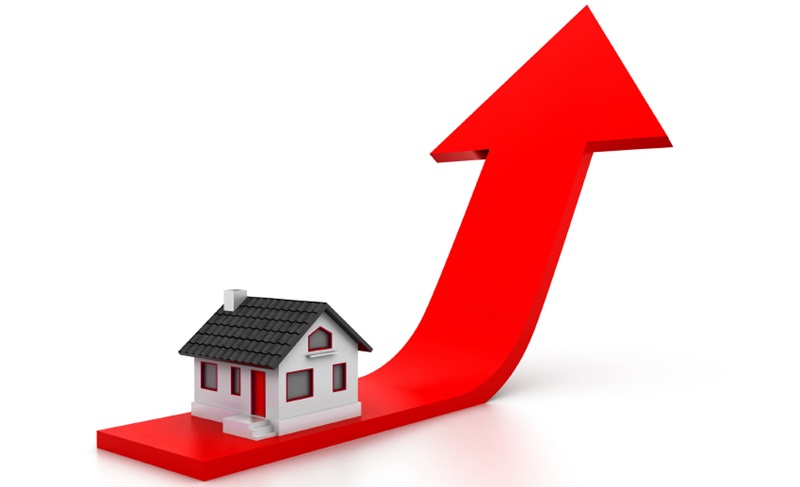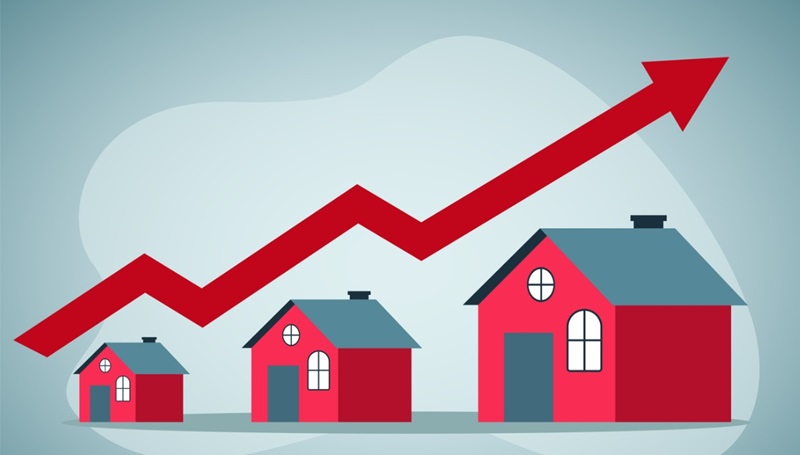House Prices Set to Recover from ‘Stone Cold 2023’ with Significant Increases Expected
The real estate market is poised for a significant upswing following the challenging period known as ‘Stone Cold 2023’. This was a year characterized by stagnant growth, sluggish sales, and incredibly low house prices. However, recent trends indicate a robust recovery is on the horizon, with house prices expected to experience substantial increases. Economic indicators, such as increased consumer confidence, low-interest rates, and a robust job market, are contributing to this optimistic outlook.
The aftermath of ‘Stone Cold 2023’ saw house prices at a historic low, causing a slowdown in the real estate market. This period was marked by a sluggish economy, limited purchasing power, and a general lack of enthusiasm towards property investment. But, as we move forward, the tide is beginning to change. The economy is gradually picking up, and people’s purchasing power is improving. This is reflected in the recent spike in demand for housing, which is expected to drive up house prices.
Economists and real estate experts predict a swift recovery in the housing market. They attribute this to a combination of factors, including low mortgage rates, which make borrowing cheaper, thus encouraging home purchases. In addition, the improving job market is boosting consumer confidence, making people more willing to make significant investments, such as buying a house.
Moreover, the supply of houses in the market is dwindling. This shortage is a result of a decrease in new construction projects during ‘Stone Cold 2023’. Now, with demand surpassing supply, house prices are naturally set to rise. Economists predict that this trend will continue for the foreseeable future, with house prices expected to rise significantly in the coming months.
Furthermore, the pandemic-era trend of remote work is also contributing to the surge in house prices. With more people working from home, the demand for larger living spaces has increased. This shift in housing needs, coupled with the limited supply of homes, is driving up prices.
However, it is important to note that the housing market recovery will not be uniform across all regions. Some areas might see a more significant increase in house prices than others. Factors such as neighborhood amenities, quality of schools, and proximity to job centers are likely to influence the rate of recovery in different regions.
In conclusion, while ‘Stone Cold 2023’ posed significant challenges for the housing market, the future looks promising. All signs point to a robust recovery, with house prices set to increase significantly. This is good news for homeowners and real estate investors who can expect to see their property values rise. However, for potential homebuyers, it means they might have to dig deeper into their pockets. Nonetheless, the expected recovery of the housing market is a positive sign of economic resilience and a testament to the cyclic nature of the real estate industry.

Market Rebound: What’s Driving the Surge in House Prices
The recent surge in house prices is an intriguing development in the real estate market, particularly after a period of stagnation and uncertainty. Several factors are driving this unexpected rebound. Firstly, low mortgage rates are creating an enticing environment for potential buyers. These rates make owning a home more affordable, increasing the demand for properties, and consequently, driving up prices.
Additionally, the pandemic has instigated a shift in lifestyle preferences, with many people now prioritizing spacious suburban homes over compact city apartments. This has led to a significant increase in demand for houses, especially those with ample outdoor space. Furthermore, the limited housing inventory is also contributing to the spike in prices. With fewer houses available for sale, competition among buyers increases, pushing prices up.
Finally, the economic recovery from the pandemic has revived consumer confidence, encouraging more people to invest in real estate. This, combined with government stimulus measures, has further fueled the housing market rebound. However, while these factors have resulted in a short-term surge, it is crucial to consider the long-term sustainability of this trend.
As the world navigates the economic fallout from the pandemic, the reality of job losses and financial insecurity may eventually impact the housing market. For now, though, the surge in house prices continues unabated, driven by a unique combination of low mortgage rates, changing lifestyle preferences, limited housing inventory, and a recovering economy.
Expert Predictions: How Much Will House Prices Rise?
Expert predictions on the potential escalation of house prices can vary significantly, influenced by a multitude of factors. Economic indicators, market trends, local area developments, and government policies are all contributing elements to these forecasts. According to some real estate economists, the current housing market suggests an upward trajectory, with some predictions indicating a potential rise of 8% to 10% in 2022. This increase is attributed to the persistently low inventory of homes for sale, coupled with the high demand driven by historically low mortgage rates.
However, it’s important to note that these predictions do not represent a uniform increase across all geographical locations. Certain areas may experience a more pronounced rise, particularly those with a high demand for residential properties and a shortage of supply. Conversely, regions with a surplus of homes or a decline in population may witness a slower growth rate or even a decrease in house prices.
Furthermore, the impact of the COVID-19 pandemic has also reshaped the housing market. The shift towards remote work has led to increased demand for homes in suburban and rural areas, pushing prices upwards. Meanwhile, the economic uncertainty has made potential buyers more cautious, potentially impacting the pace of price increases.
In the long-term, economists suggest that house prices will continue to rise, albeit at a slower pace. However, these predictions are dependent on numerous factors, such as the state of the economy, demographic changes, and evolving consumer preferences. For instance, an economic recovery could boost consumer confidence and increase house prices, while a surge in remote work could continue to drive up demand and prices in less densely populated areas.
In conclusion, while expert predictions indicate an overall increase in house prices, the extent of this rise is subject to several influences. Therefore, potential buyers and investors should consider these factors when making decisions in the real estate market.

Factors Contributing to the 2024 Housing Market Recovery
The recovery of the housing market in 2024 can be attributed to various factors. Primary among these is the resurgence of the economy following the economic downturn caused by the global pandemic. As businesses started to recover and unemployment rates decreased, individuals and families regained the confidence and financial stability necessary to invest in real estate. Additionally, government initiatives such as economic stimulus packages, tax benefits for homebuyers and efforts to increase affordable housing availability have played a crucial role in reviving the housing market.
Continued low interest rates have also been a significant factor, enabling more people to afford mortgage loans. Technological advancements have made the process of home buying more efficient and user-friendly, with virtual tours and digital paperwork becoming the norm. This has attracted a new generation of tech-savvy homebuyers to the market.
The shift in lifestyle preferences following the pandemic has also contributed to the recovery. Many people, having experienced remote work, have sought larger homes or those with dedicated office spaces, leading to increased demand in the housing market. Moreover, migration trends from urban to suburban or rural areas have led to a boom in these markets.
The housing industry’s resilience during the pandemic, with prices remaining relatively stable, has reassured investors and homebuyers about the safety of investing in real estate. This has triggered a positive cycle of increased demand and supply, further aiding the recovery. Meanwhile, the construction industry has responded to this demand by ramping up the development of new homes, which has also stimulated the economy and created jobs.
In conclusion, the 2024 housing market recovery can be attributed to a combination of economic recovery, government initiatives, low interest rates, technological advancements, shifts in lifestyle preferences and the housing industry’s resilience.
Regional Analysis: Areas Expected to See the Highest Growth
Regional analysis is a vital tool that provides invaluable insights into the areas anticipated to witness the highest growth. These areas can be identified in various sectors such as technology, real estate, agriculture, and manufacturing, to name a few. The regions showcasing high growth potential are usually characterized by favorable economic conditions, high-quality infrastructure, an educated workforce, and a stable political environment.
For instance, in the technology sector, regions such as Silicon Valley, Bangalore, and Shenzhen are expected to continue experiencing high growth due to their strong tech ecosystems. Similarly, in real estate, cities like Austin, Texas, and Phoenix, Arizona, are projected to see significant growth owing to their booming populations and flourishing job markets.
In the agricultural sector, regions with fertile lands, sufficient water resources, and favorable climatic conditions such as the Midwest in the United States and the Punjab region in India are expected to see substantial growth. Meanwhile, in manufacturing, regions like the Pearl River Delta in China and the Ruhr Valley in Germany are projected to witness significant growth due to their strong industrial base and strategic locations.
However, it’s crucial to note that growth is not solely dependent on these factors. Other aspects like government policies, technological advancements, and global economic trends also play a significant role. For instance, regions with supportive government policies towards renewable energy are likely to see growth in the solar and wind energy sectors. Similarly, regions that adapt quickly to technological advancements are expected to experience growth in sectors like AI, machine learning, and robotics.
In conclusion, regional analysis is a complex process that involves studying various factors and trends. It is an essential tool for businesses, investors, and policymakers to identify potential growth regions and make informed decisions. This analysis allows for capitalizing on opportunities and mitigating risks, thereby fostering sustainable growth and development.

Homebuyers’ Guide: Navigating the Post-2023 Market Upturn
As we approach the post-2023 market upturn, potential homebuyers will need a comprehensive guide to navigate the ever-changing real estate landscape. Despite the uncertainties, this period may present a wealth of opportunities for those who are prepared and informed. The first step is to understand the economic indicators. A market upturn typically signifies a robust economy, which can lead to increased demand for homes and, potentially, higher prices. Therefore, it’s crucial for potential buyers to assess their financial capabilities and consider the long-term implications of their investment.
In the post-2023 market, interest rates may also rise alongside improving economic conditions. As such, prospective homebuyers should take into account the cost of borrowing and aim to secure a mortgage rate that suits their financial situation. It’s also valuable to work with a competent and experienced real estate agent who can provide guidance and insight into the local housing market. They can assist in finding a home that meets your needs and fits your budget, and help you negotiate the best possible deal.
Next, homebuyers should consider the location of their prospective home. The post-2023 upturn may result in certain areas becoming more desirable, leading to increased property values. Thus, researching and understanding the trends and potential of different neighborhoods can be vital.
Additionally, in the aftermath of the COVID-19 pandemic, the desire for more space and comfort at home has increased. Consequently, homes with home offices, outdoor spaces, and larger living areas may command higher prices. Buyers should take into consideration these new norms when choosing a home, as they may affect resale value in the future.
Lastly, be patient. Buying a home is a significant decision, and rushing into it during a market upturn could lead to regrets. Take your time to explore options, seek professional advice, and make a well-informed decision. Navigating the post-2023 market upturn may seem challenging, but with proper preparation and a strategic approach, you can find a home that suits your needs and proves to be a fruitful investment.
